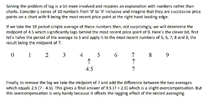- Joined
- 9 June 2005
- Posts
- 99
- Reactions
- 0
Has anybody any views on the Hull Moving Average (a moving average devised by Alan Hull which attempts to overcome the usual lags caused by MAs)? See the link for more details - http://www.ensignsoftware.com/tips/tradingtips72.htm
I read one review which claimed that Hull was effectively using future data to plot his MA. I haven't looked at this in depth yet but wondered whether others thought there is any merit in spending time on it.
I read one review which claimed that Hull was effectively using future data to plot his MA. I haven't looked at this in depth yet but wondered whether others thought there is any merit in spending time on it.



